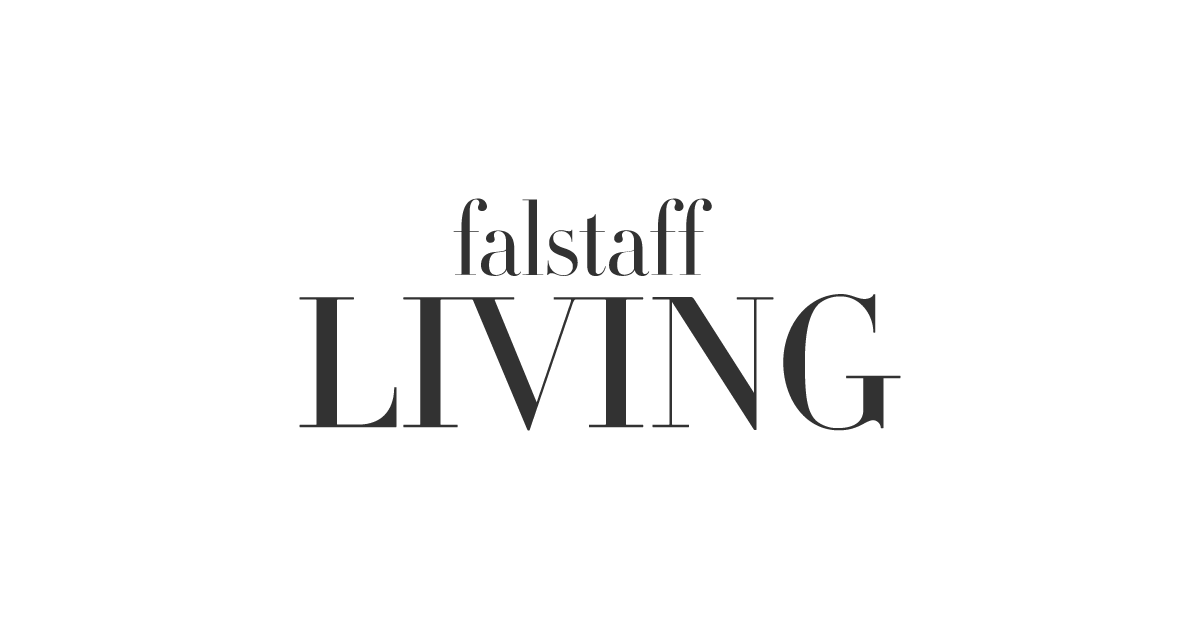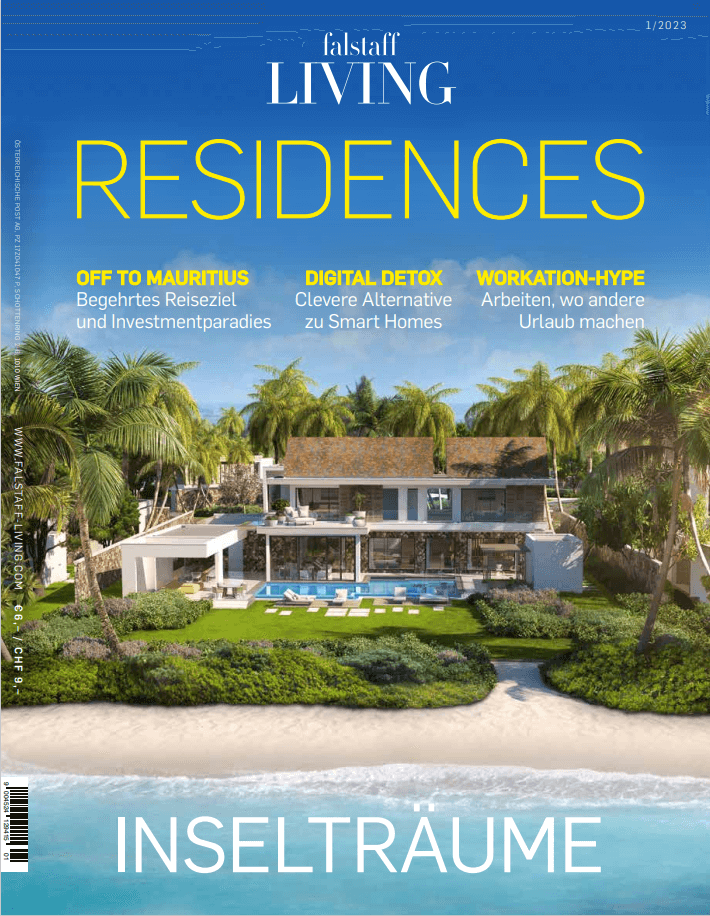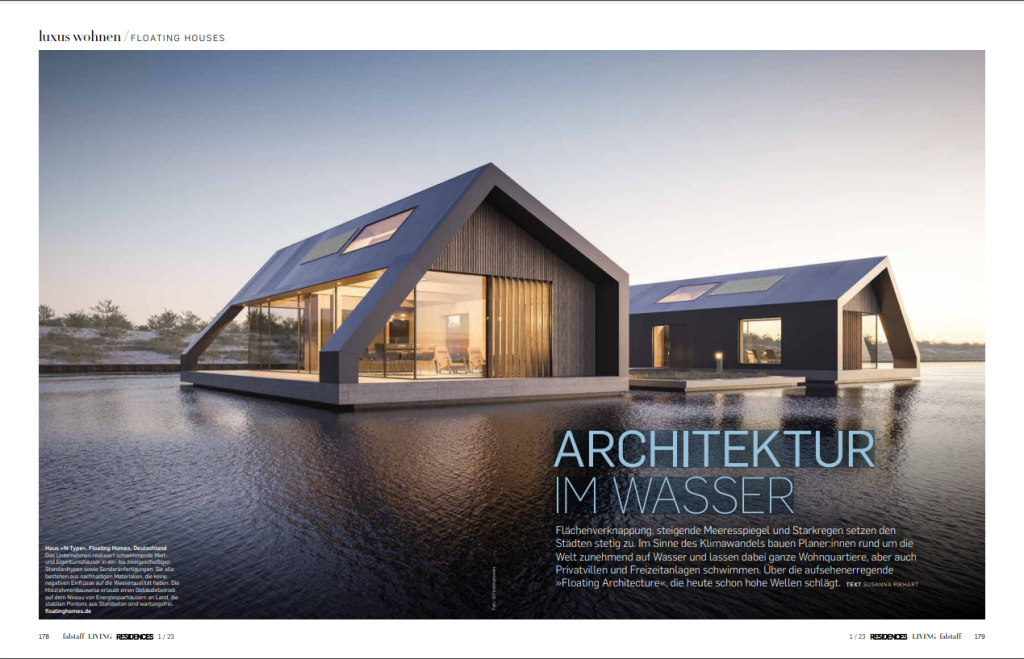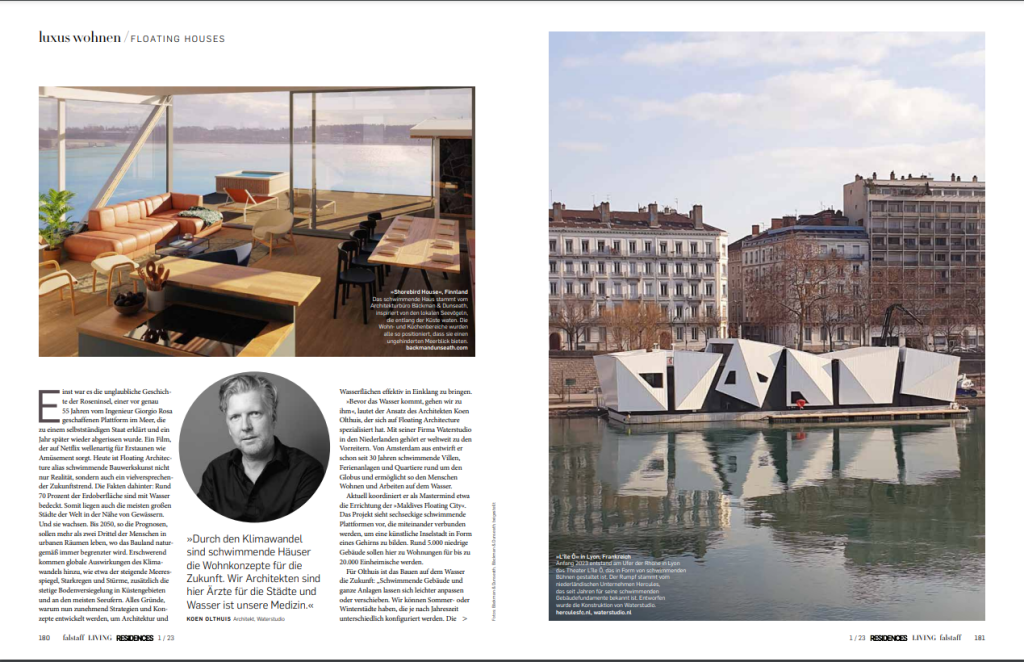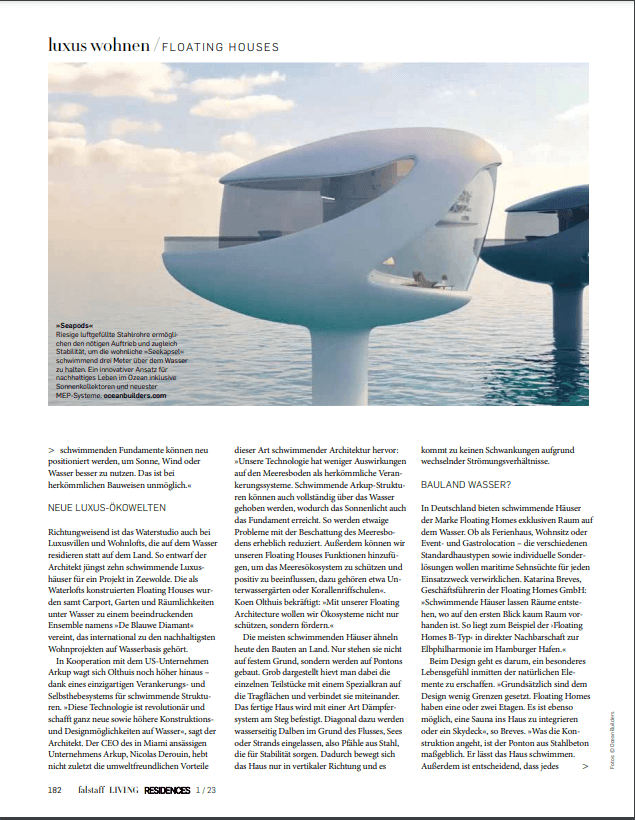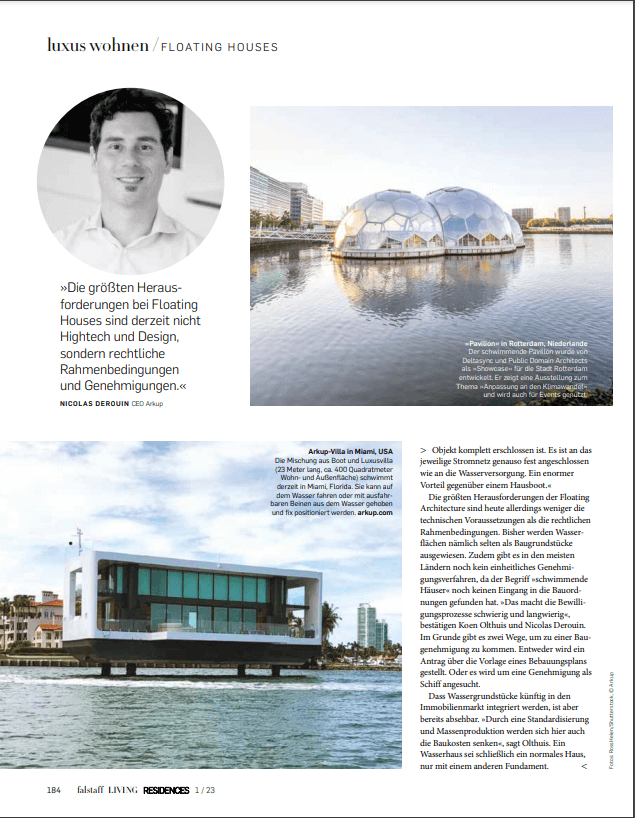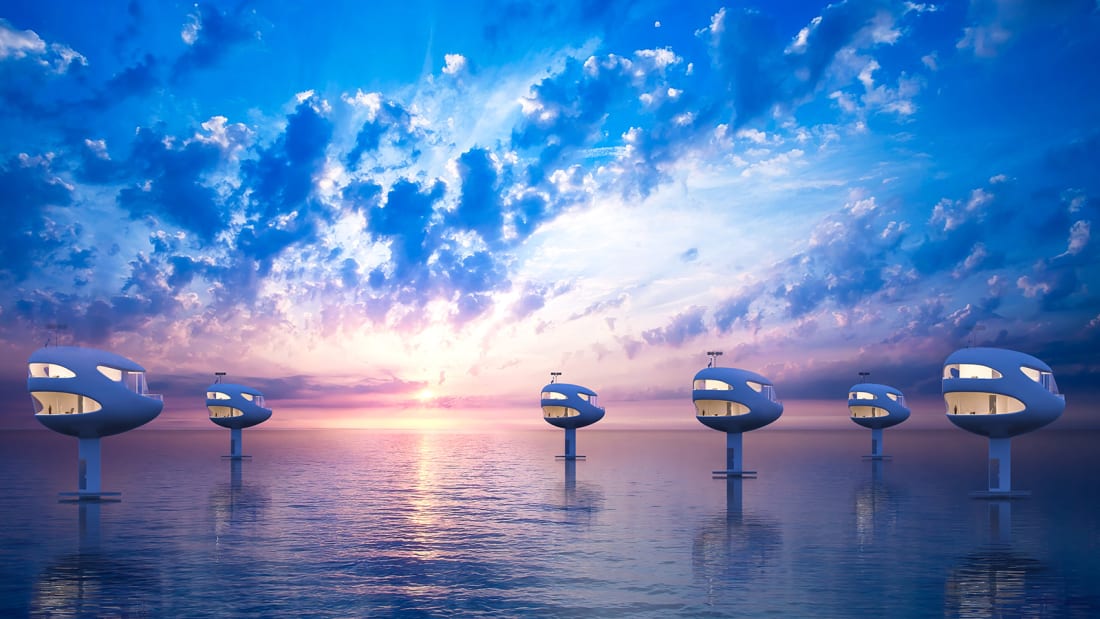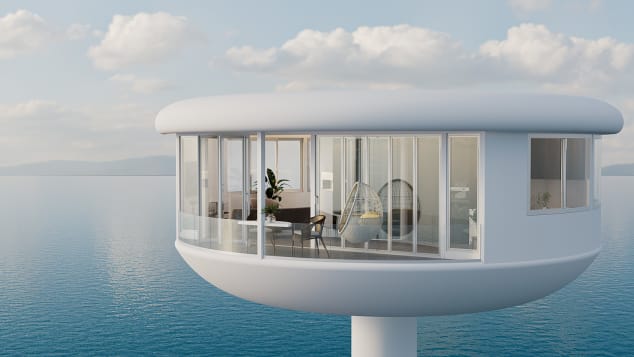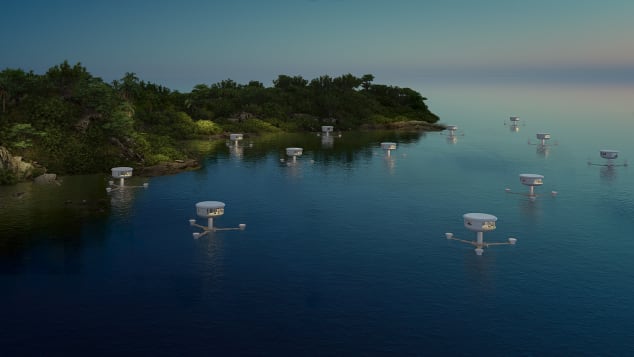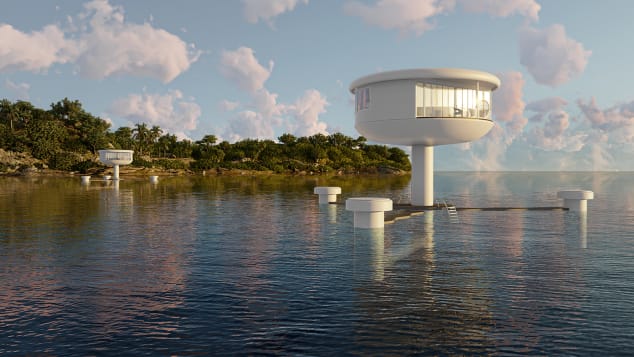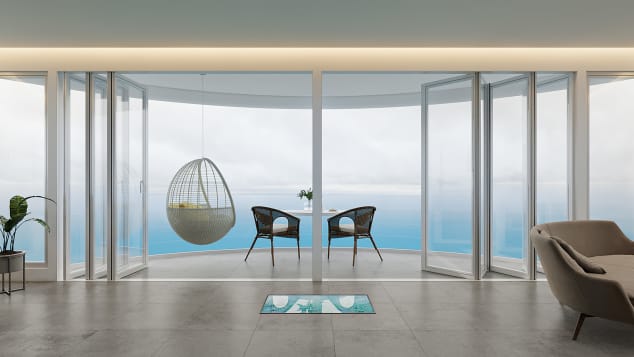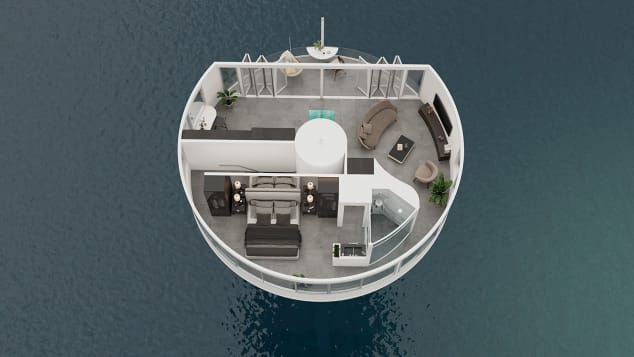“Αισθανόμαστε πιο ασφαλείς σε μια καταιγίδα επειδή επιπλέουμε”, λέει στο Yale e360, η Siti Boelen, μια Ολλανδή τηλεοπτική παραγωγός που μετακόμισε στο Schoonschip πριν από δύο χρόνια.
Καθώς η άνοδος της στάθμης της θάλασσας και οι όλο και πιο συχνές καταιγίδες προκαλούν διόγκωση των υδάτων, οι πλωτές γειτονιές προσφέρουν ένα πείραμα στην αντιπλημμυρική προστασία που θα μπορούσε να επιτρέψει στις παράκτιες κοινότητες να αντισταθούν στην κλιματική αλλαγή. Στην πυκνοκατοικημένη Ολλανδία, η ζήτηση για τέτοια σπίτια αυξάνεται.
Ένα πλωτό σπίτι μπορεί να κατασκευαστεί σε οποιαδήποτε ακτογραμμή και είναι σε θέση να αντιμετωπίσει την άνοδο της θάλασσας ή τις πλημμύρες που προκαλούνται από τη βροχή, παραμένοντας στην επιφάνεια του νερού. Στηριζόμενα σε χαλύβδινους στύλους, συνδέονται με το τοπικό αποχετευτικό σύστημα και το δίκτυο ηλεκτροδότησης. Μοιάζουν δομικά με σπίτια, αλλά στο υπόγειο, διαθέτουν ένα κύτος από σκυρόδεμα που λειτουργεί ως αντίβαρο, επιτρέποντάς τους να παραμένουν σταθερά στο νερό.
Ο Koen Olthuis, αρχιτέκτοντας που σχεδιάζει αποκλειστικά πλωτά κτίρια, λέει ότι : “σταθεροποιούνται από στύλους που σκάβονται περίπου 65 μέτρα μέσα στο έδαφος και εξοπλίζονται με υλικά που απορροφούν τους κραδασμούς για να μειώνουν την αίσθηση κίνησης από τα κύματα”.
Τα σπίτια ανεβαίνουν όταν τα νερά ανεβαίνουν και κατεβαίνουν όταν τα νερά υποχωρούν.
“Τώρα έχουμε την τεχνογνωσία να χτίσουμε πάνω στο νερό”, λέει ο Olthuis, ο οποίος έχει σχεδιάσει 300 πλωτά σπίτια, γραφεία, σχολεία και κέντρα υγείας. Πρόσθεσε ότι αυτός και οι συνάδελφοί του “δεν βλέπουν τους εαυτούς τους ως αρχιτέκτονες, αλλά ως γιατρούς της πόλης, και το νερό ως φάρμακο”.
Στο Άμστερνταμ, το οποίο έχει σχεδόν 3.000 επίσημα εγγεγραμμένα παραδοσιακά σπίτια στα κανάλια του, εκατοντάδες άνθρωποι έχουν μετακομίσει σε πλωτά σπίτια σε παραμελημένες γειτονιές.
Το Schoonschip, που σχεδιάστηκε από την ολλανδική εταιρεία Space&Matter, αποτελείται από 30 κατοικίες, οι μισές από τις οποίες είναι διπλοκατοικίες, πάνω σε ένα κανάλι σε μια πρώην βιομηχανική περιοχή. Η γειτονιά βρίσκεται σε μικρή απόσταση με πλοίο από το κέντρο του Άμστερνταμ, όπου πολλοί από τους κατοίκους εργάζονται. Τα μέλη της κοινότητας μοιράζονται σχεδόν τα πάντα, συμπεριλαμβανομένων των ποδηλάτων, των αυτοκινήτων και των τροφίμων που αγοράζονται από τοπικούς αγρότες. Κάθε κτίριο λειτουργεί τη δική του αντλία θερμότητας και αφιερώνει περίπου το ένα τρίτο της οροφής του σε πράσινο και ηλιακούς συλλέκτες. Οι κάτοικοι πωλούν την πλεονάζουσα ενέργεια και στο εθνικό δίκτυο.
Οι προκλήσεις
Ωστόσο, τα πλωτά σπίτια θέτουν πολλές προκλήσεις. Ο δυνατός άνεμος και η βροχή, ή ακόμη και το πέρασμα μεγάλων κρουαζιερόπλοιων, μπορεί να τα ταρακουνήσουν. Η Siti Boelen, λέει ότι όταν μετακόμισε για πρώτη φορά, οι καταιγίδες την έκαναν να το σκεφτεί δύο φορές να ανέβει στην κουζίνα του τρίτου ορόφου. “Το νιώθεις στο στομάχι σου”, λέει, προσθέτοντας ότι από τότε το έχει συνηθίσει.
Το Ρότερνταμ, το μεγαλύτερο λιμάνι της Ευρώπης, φιλοξενεί το μεγαλύτερο πλωτό κτίριο γραφείων στον κόσμο, καθώς και μια πλωτή φάρμα όπου οι αγελάδες αρμέγονται από ρομπότ, προμηθεύοντας γαλακτοκομικά προϊόντα τα τοπικά παντοπωλεία.
Οι ολλανδικές εταιρείες που ειδικεύονται στα πλωτά κτίρια έχουν κατακλυστεί από αιτήματα κατασκευαστών από το εξωτερικό για φιλόδοξα έργα. Η ολλανδική εταιρεία τεχνολογίας Blue21, εργάζεται επί του παρόντος σε μια προτεινόμενη σειρά πλωτών νησιών στη Βαλτική Θάλασσα που θα στεγάζει 50.000 ανθρώπους και θα συνδέεται με μια ιδιωτικά χρηματοδοτούμενη υποθαλάσσια σιδηροδρομική σήραγγα 15 δισ. ευρώ, η οποία θα συνδέει το Ελσίνκι με το Ταλίν της Εσθονίας. Το έργο υποστηρίζεται από τον Φινλανδό επενδυτή και επιχειρηματία των “Angry Birds” Peter Vesterbacka.
Ο Koen Olthuis, θα επιβλέψει ακόμα την κατασκευή μιας πλωτής κοινότητας 20.000 ατόμων κοντά στην πρωτεύουσα Μάλε των Μαλδίβων. Κάτω από την επιφάνεια του νερού θα υπάρχουν τεχνητοί ύφαλοι που θα βοηθήσουν στην υποστήριξη της θαλάσσιας ζωής. Τα κτίρια θα αντλούν κρύο θαλασσινό νερό από τον πυθμένα για να βοηθούν τα συστήματα κλιματισμού.
“Δεν είναι πλέον η ιδέα ενός τρελού μάγου που χτίζει ένα πλωτό σπίτι”, λέει ο Olthuis. “Τώρα δημιουργούμε γαλάζιες πόλεις, βλέποντας το νερό ως εργαλείο”.


